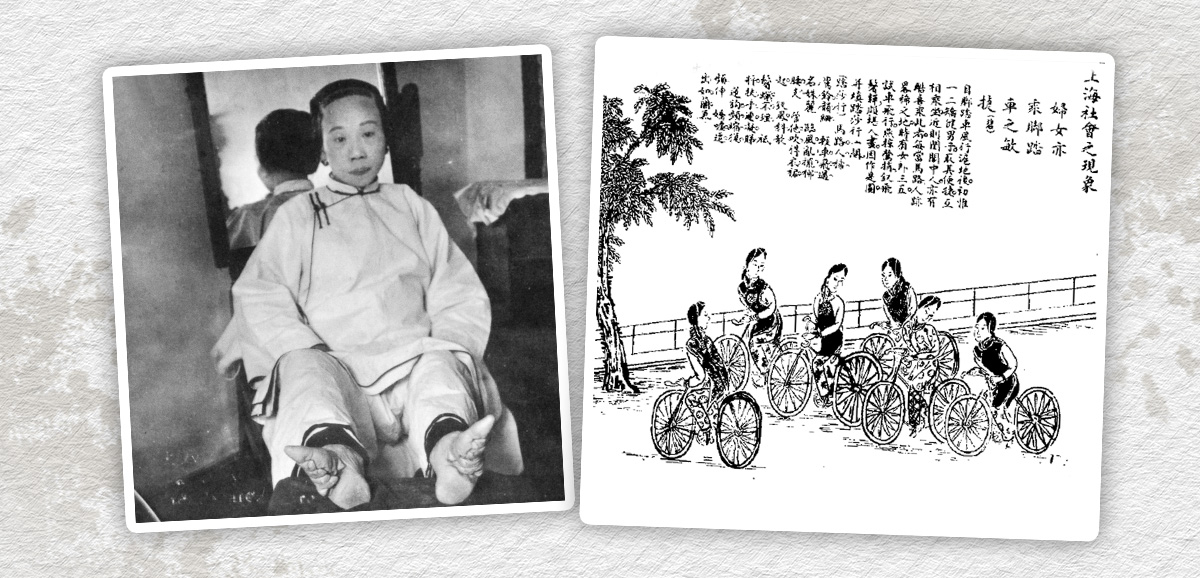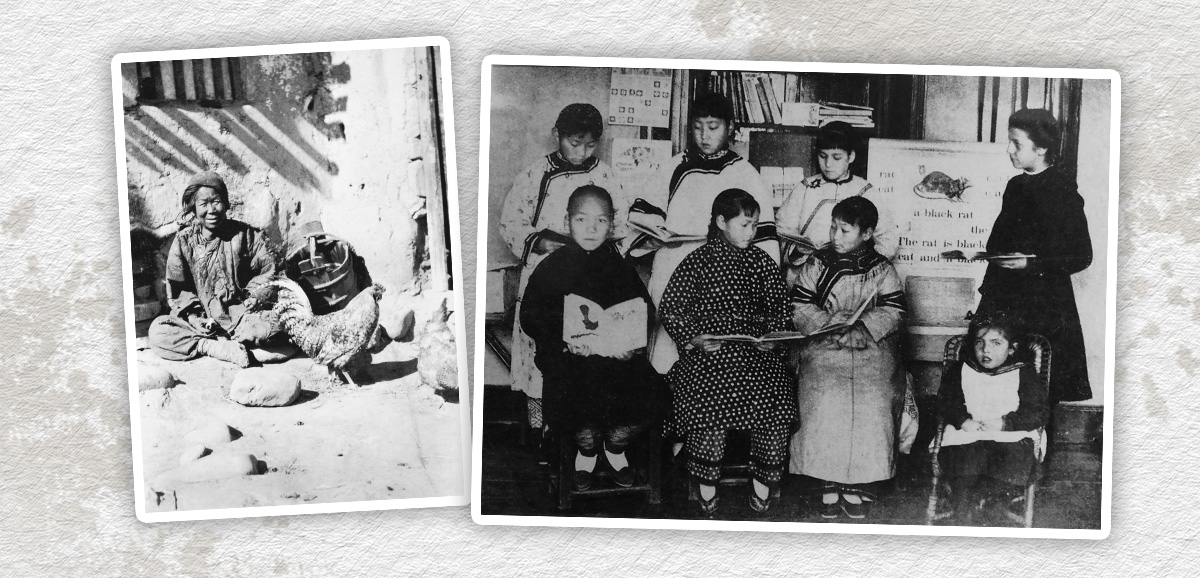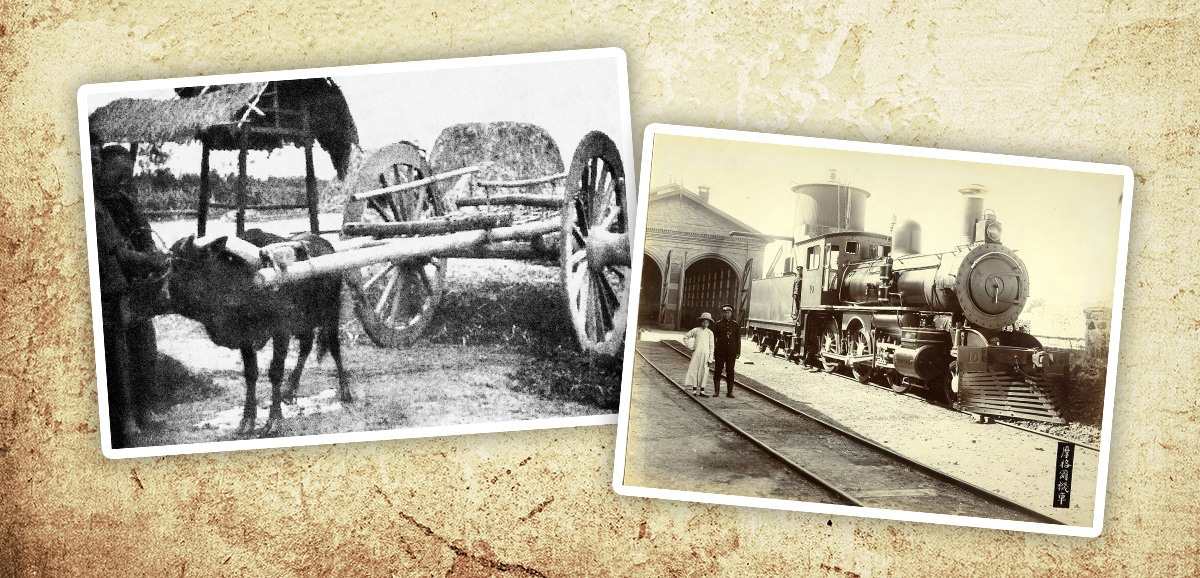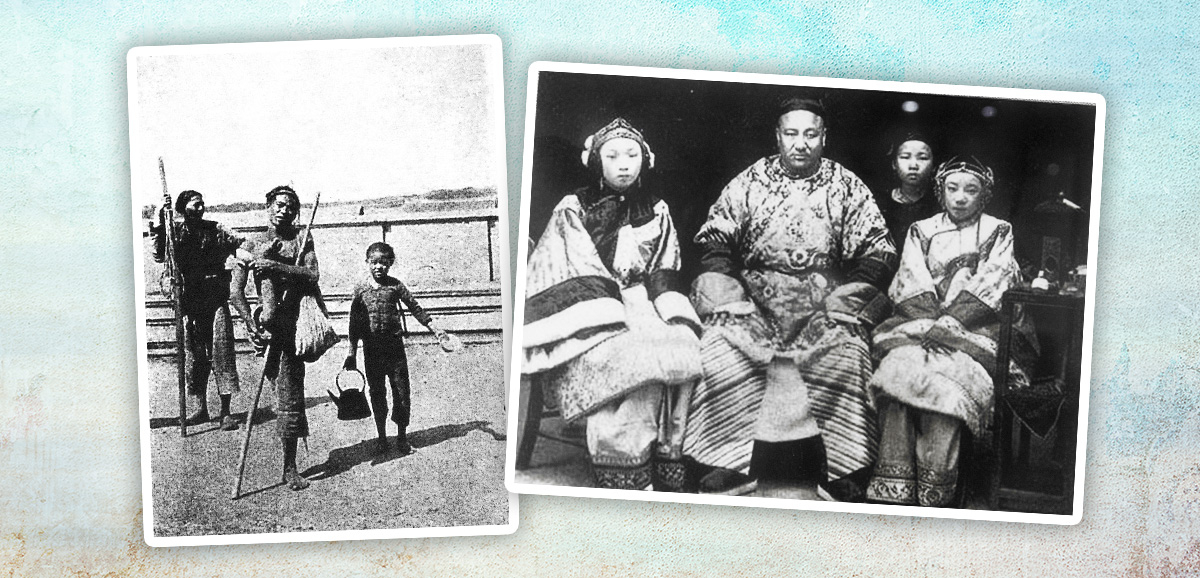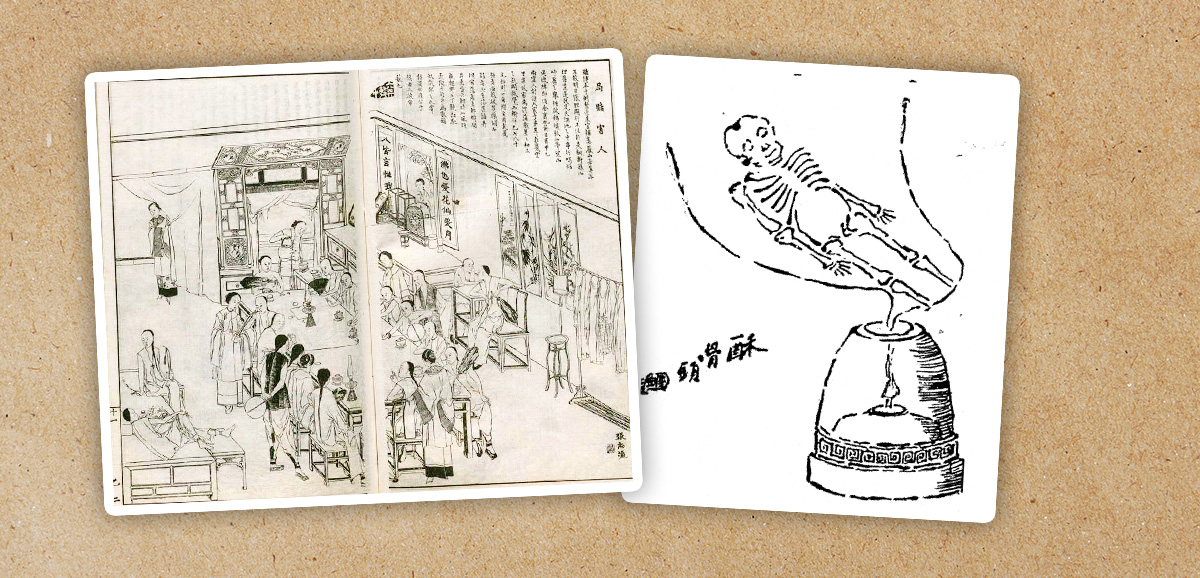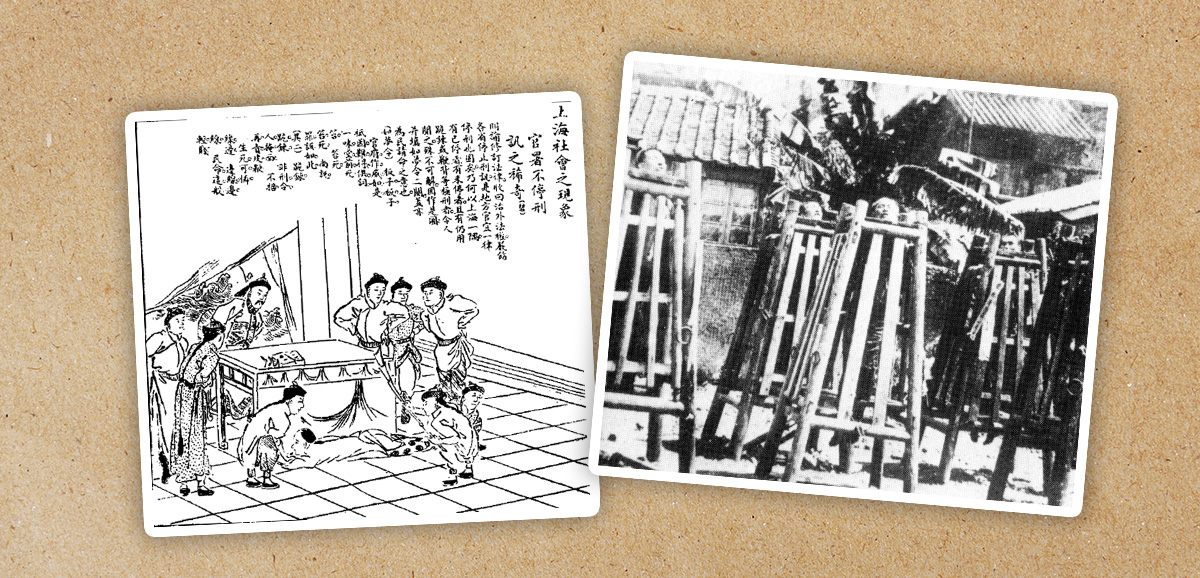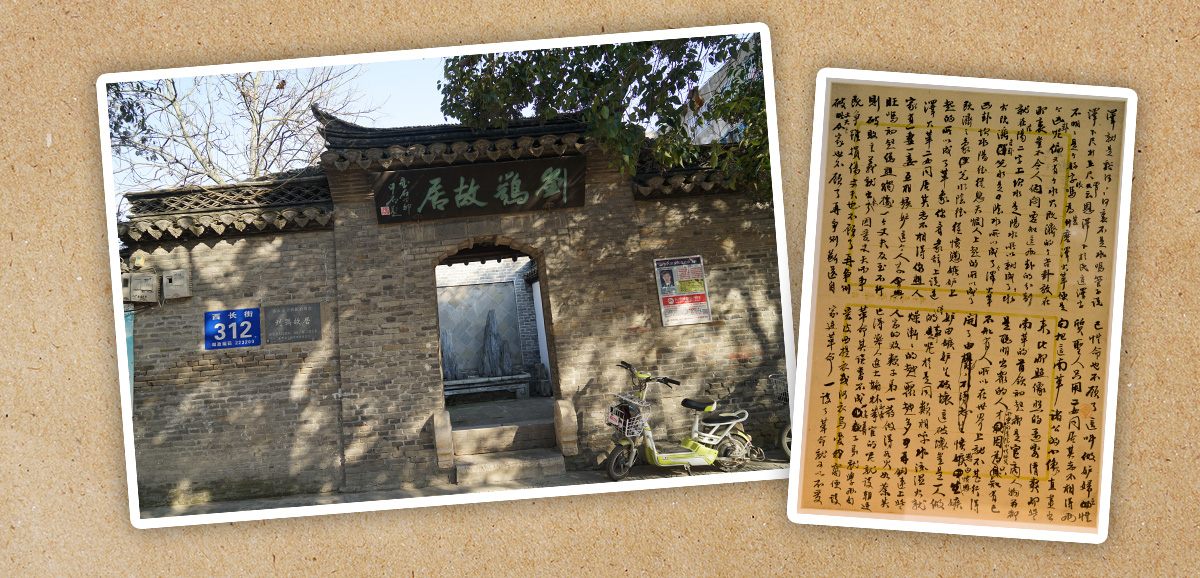During the early modern era, China suffered imperialist invasions, exposed to foreign cultures, and compelled to adopt various reform movements, namely the Self-strengthening Movement (洋務運動), the Hundred Days’ Reform (戊戌維新), and the Late Qing Reform (晚清新政). Naturally, Chinese society and culture went through many upheavals during this period. The following is a summary of the main characteristics of late Qing society and culture:
(1) Lifestyles: the late Qing era saw China transitioning from a traditional to a modern society and from self-seclusion to opening itself to the world. Chinese in Western suits could be seen. It was a time when qipao (旗袍, a Manchu-style dress) coexisted with hanfu (漢服, a Han-style attire), and Chinese cuisine could be washed down with coffee. Opium-smoking, princely mansions, siheyuan (四合院, traditional courtyard compounds), sedan chairs, rickshaws, men with queues, women with bound feet, and the buying of tongyangxi (童養媳, pre-adolescent girls adopted into a family as future brides) were all part of everyday life in late Qing society.
(2) Late Qing novels and xiqu (戲曲, Chinese opera): literary and art works created for popular consumption were critical of social ills. Various “novels of denunciation” - in particular The Bureaucrat: A Revelation (《官場現形記》), Bizarre Happenings Eyewitnessed over Two Decades (《二十年目睹之怪現狀》), The Travels of Lao Can (《老殘遊記》), and A Flower in a Sinful Sea (《孽海花》) - have come to be viewed as definitive works of their time. For xiqu, new developments included the rise of Huiban (徽班, Anhui opera troupes) in Beijing and the popularity of guangongxi (關公戲, Lord Guan plays).
(3) New technologies in the late Qing era: as early as 1868, just as trains were introduced, newspapers started reporting about bicycles, a vehicle that enabled riders to travel at the “speed of lightning”. 1897 saw the introduction of chest examination by X-ray machines, electric lights, silent films, hot-air balloons, and cesarean delivery under anesthesia. While still steeped in feudal and autocratic traditions, late Qing society was responding to the influence of foreign cultures and selectively incorporating aspects of Western cultures into its own.
|
|
Which books are known as the late Qing dynasty’s four great novels of denunciation? What were the historical circumstances that gave rise to them? |
|
|
See answer below. |
Two late Qing photos. On the left: a Westerner among the Chinese; on the right: a father in a changpao and magua (長袍馬褂, a Manchu-style robe and jacket) and his son in Western attire. From the social activities and attire during that era, the clash of cultures between Chinese and Western as well as new and old is evident.
Two late Qing photos of women’s lives. On the left: a female peasant and her chickens in Gansu Province (甘肅); on the right: girls attending an English lesson at a school in Shanghai (上海). Women had more opportunities to shine in major cities with a more liberal ethos.
On the left: a woman whose feet deformed due to foot binding; on the right: female cyclists. The traditional women and “new women” in late Qing dynasty led vastly different lives.
Two late Qing photos of Buddhist monks and Chinese Christians. As Western culture continued to spread in China, the number of Chinese Christians in the late Qing era also rapidly increased.
Modes of transport in the late Qing era: an ox-drawn cart and a steam locomotive on the Beijing-Zhangjiakou Railway (京張鐵路).
Traditional villages and cities during the late Qing era: a village in Jiangxi Province (江西) and the bank of the Huangpu River (黃浦江) in Shanghai.
Poverty and wealth in the late Qing era: beggars and a Manchu prince with members of his harem.
Two illustrations cautioning against gambling and opium-smoking, both prevalent during the era.
On the left: a picture titled A Shanghai Social Phenomenon: Government Officers Making a Spectacle of Themselves by Continuing to Practice Judicial Torture (《上海社會之現象:官署不停刑訊之稀奇》). On the right: criminals sentenced to a slow death by a form of torture known as “standing in a wooden cage (站木籠)” in a public execution. The photos show that corruption and brutality were still rampant in the late Qing bureaucracy.
On the left: the former residence of Liu E (劉鶚). He is the author of The Travels of Lao Can, a novel of denunciation published during the late Qing era. On the right: a page from the manuscript of chapter 11 of Travels of Lao Can. The unhealthy trends and injustices in society and in the government bureaucracy provided rich fodder for this novel of denunciation.
|
|
Which books are known as the late Qing dynasty’s four great novels of denunciation? What were the historical circumstances that gave rise to them? |
|
|
In A Brief History of Chinese Fiction (《中國小說史略》) published in 1923, Lu Xun (魯迅) categorised four novels - The Travels of Lao Can by Liu E, The Bureaucrat: A Revelation by Li Boyuan (李伯元), Bizarre Happenings Eyewitnessed over Two Decades by Wu Jianren (吳趼人) and A Flower in a Sinful Sea by Zeng Pu (曾樸) as “late Qing novels of denunciation”, or the “four great novels of denunciation in the late Qing era.” From the Gengzi Year (庚子年) during Emperor Guangxu’s (光緒) reign (1900) onwards, novels of denunciation prevailed. A number of historical circumstances contributed to the emergence of the genre: the failure of the Hundred Days’ Reform, the Boxer Rebellion (義和團之亂), the invasion of the Eight-Nation Alliance, rampant corruption in the bureaucracy, injustices in judicial practice, and a relatively more liberal climate that encouraged the public to come forward and condemn harmful social practices. |
Source of most photos used in this feature piece: Fotoe




